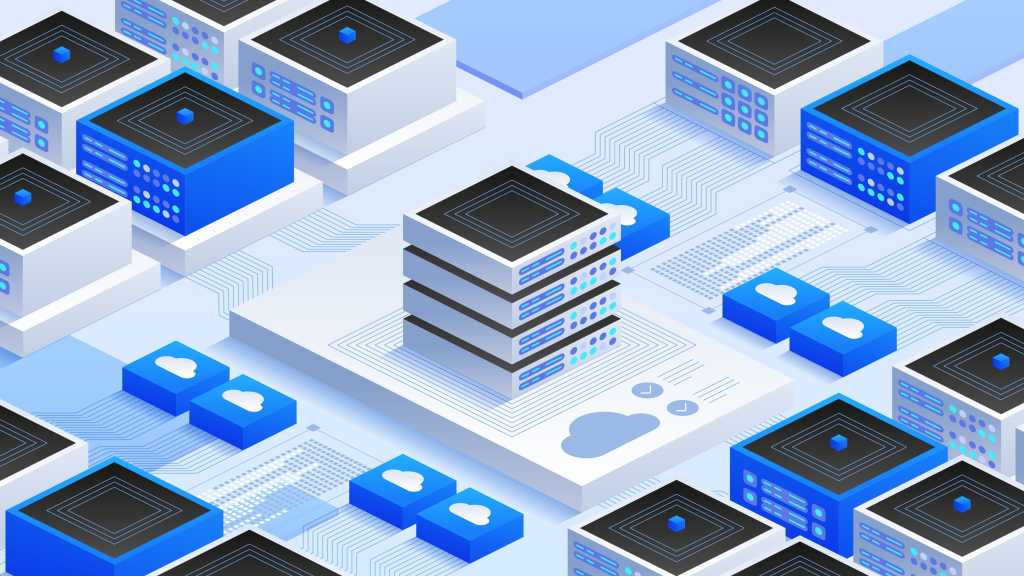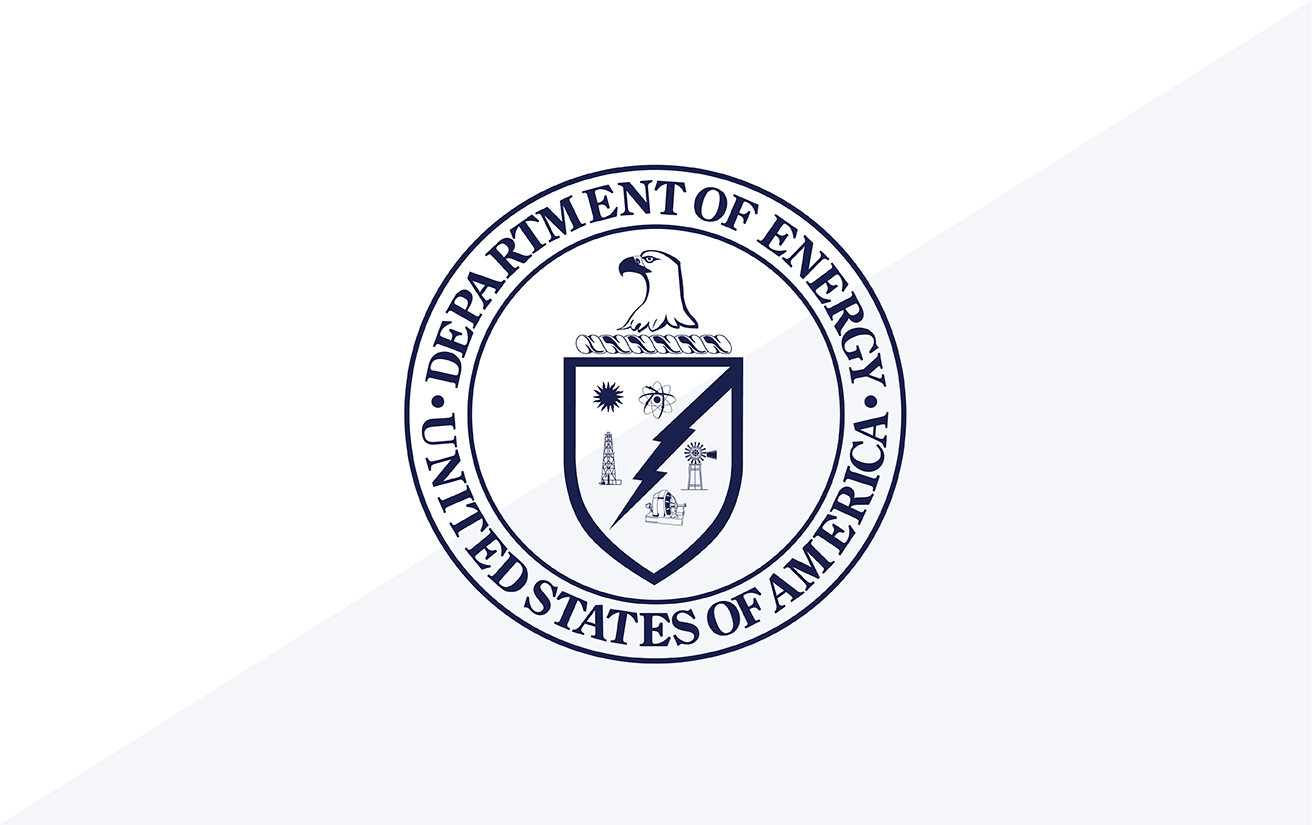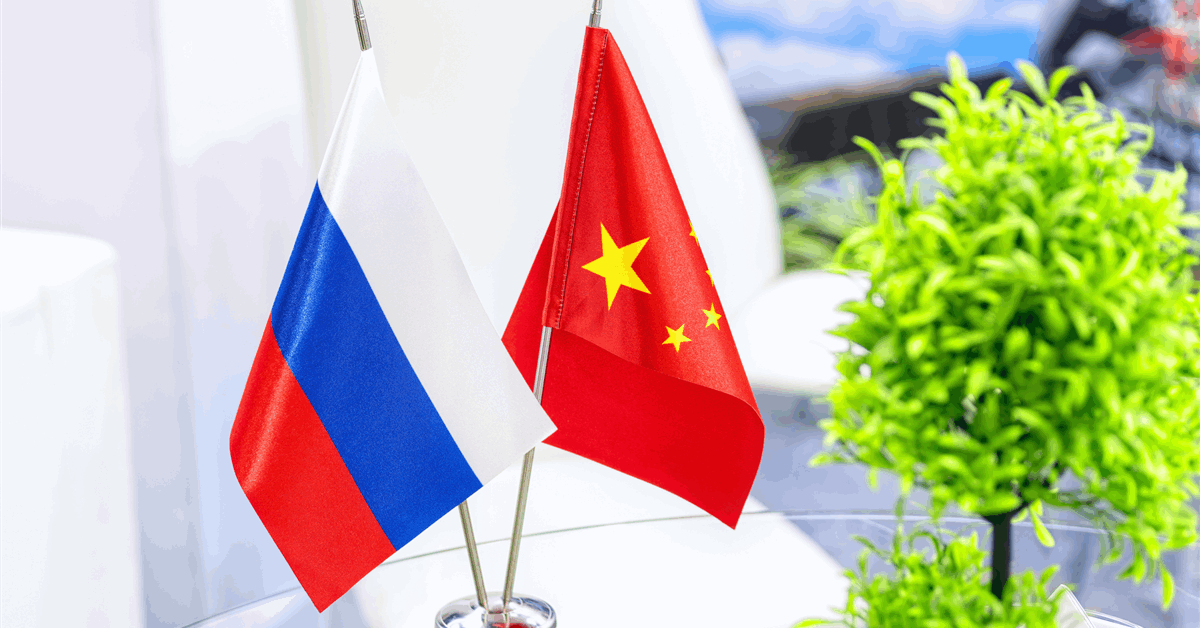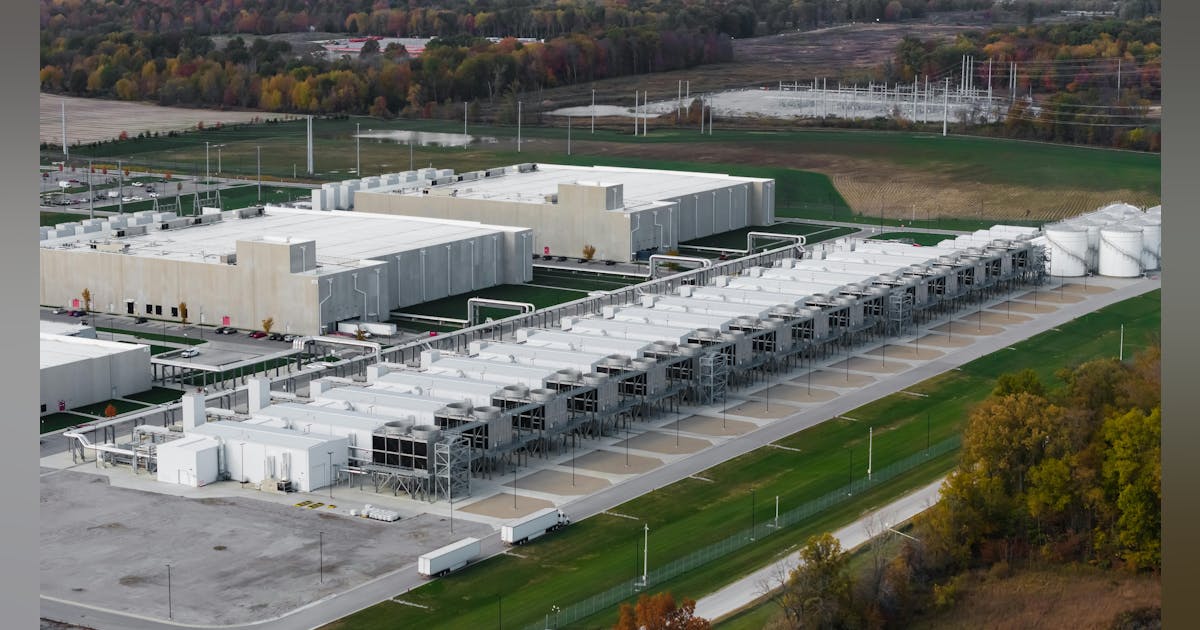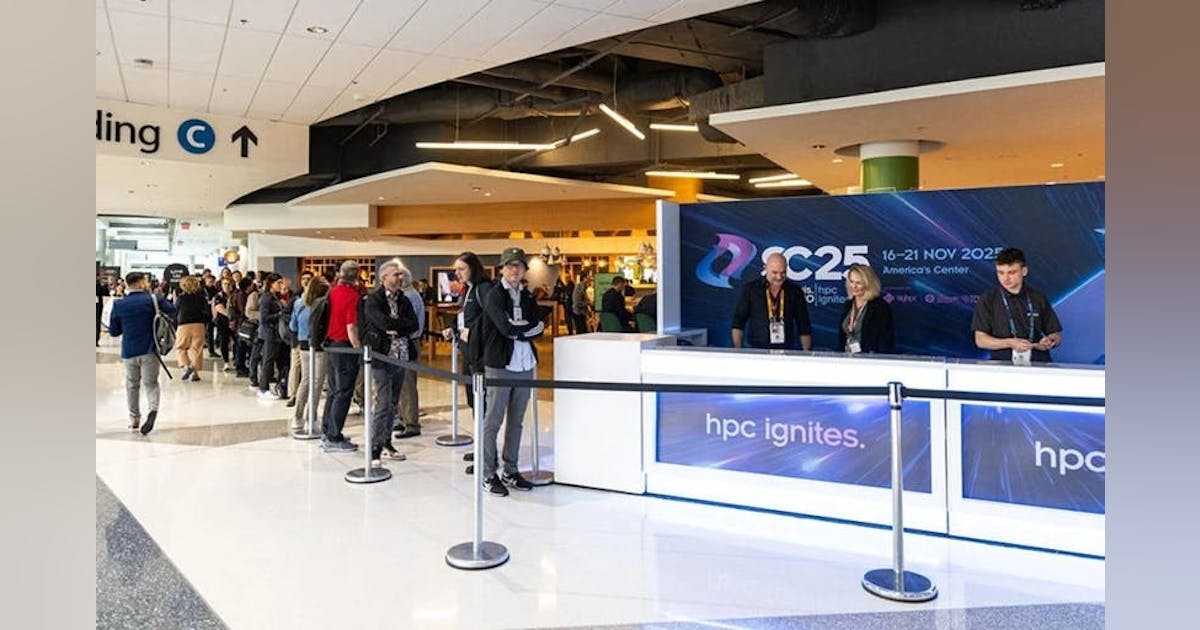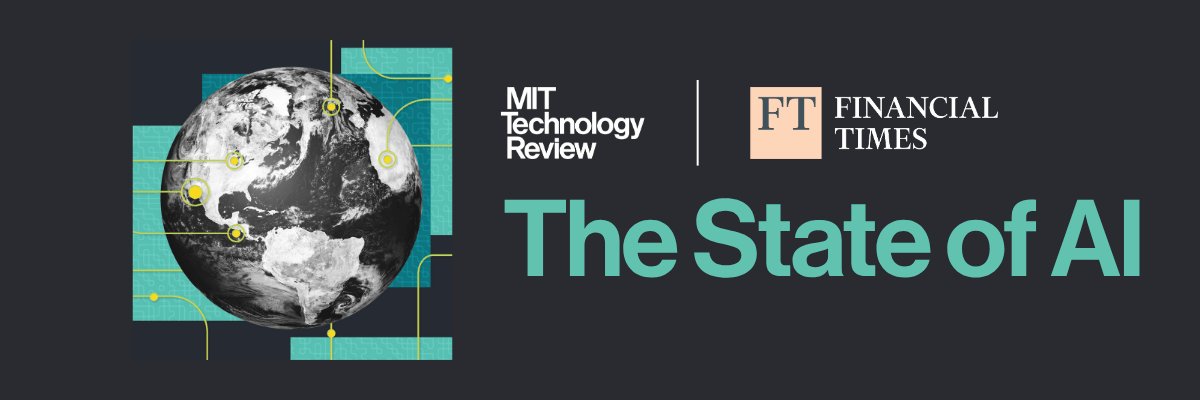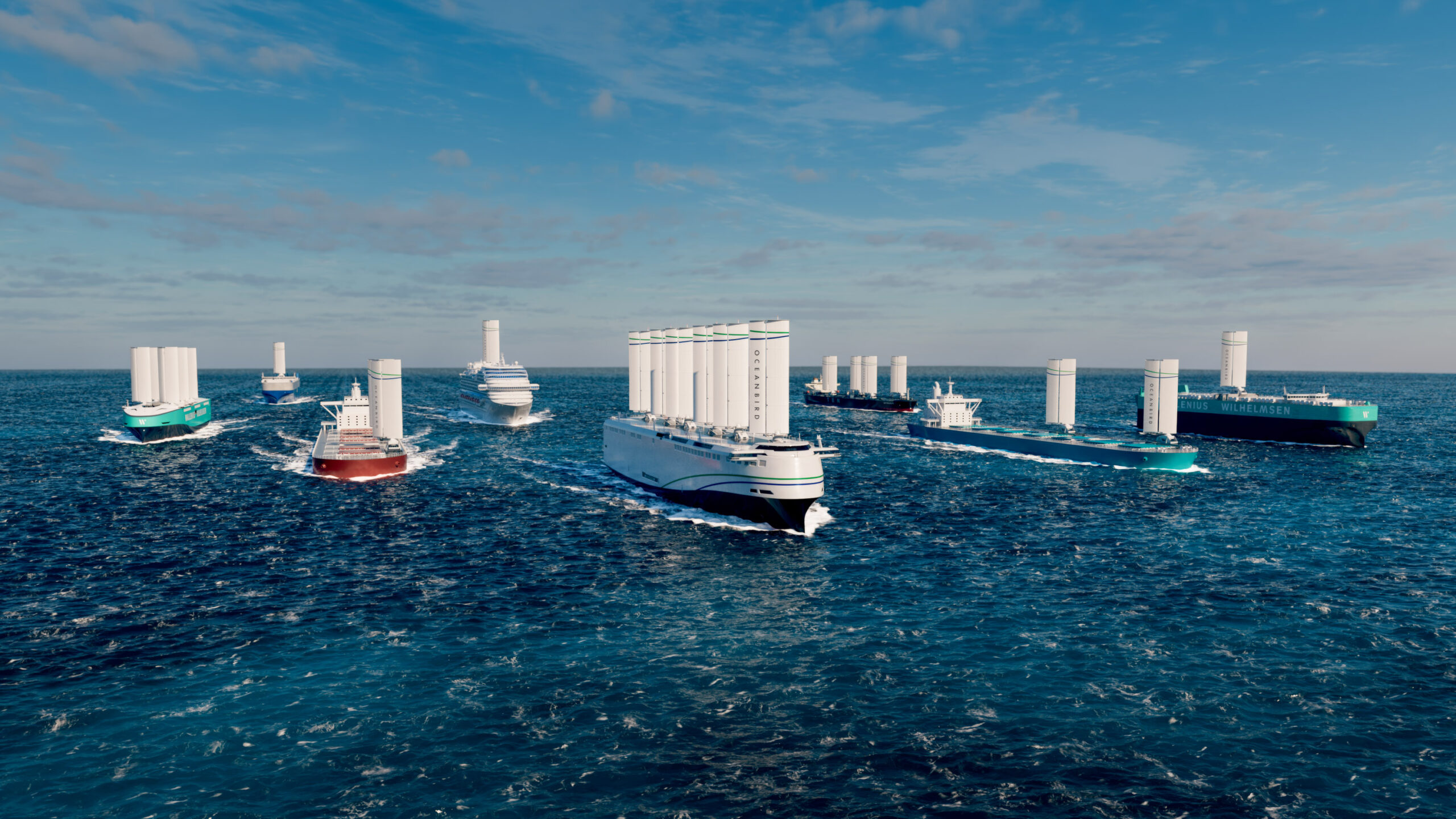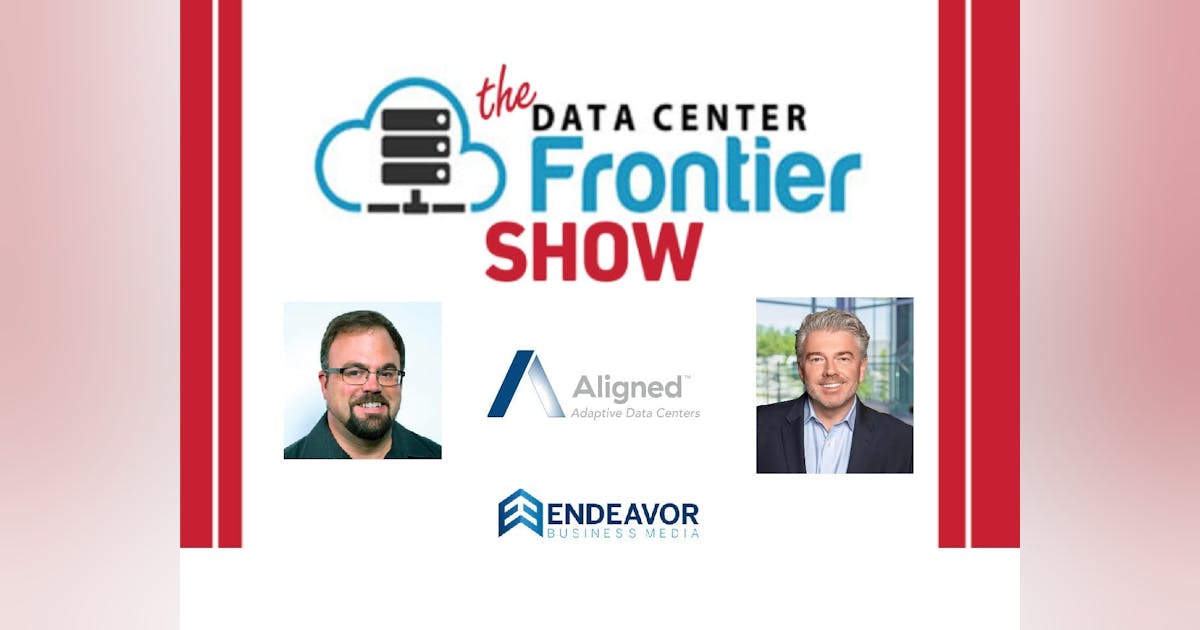
In the latest episode of the Data Center Frontier Show podcast, DCF Editor-in-Chief Matt Vincent sits down with Phill Lawson-Shanks, Chief Innovation Officer at Aligned Data Centers, for a wide-ranging discussion that touches on some of the most pressing trends and challenges shaping the future of the data center industry.
From the role of nuclear energy and natural gas in addressing the sector’s growing power demands, to the rapid expansion of Aligned’s operations in Latin America (LATAM), in the course of the podcast Lawson-Shanks provides deep insight into where the industry is headed.
Scaling Sustainability: Tracking Embodied Carbon and Scope 3 Emissions
A key focus of the conversation is sustainability, where Aligned continues to push boundaries in carbon tracking and energy efficiency. Lawson-Shanks highlights the company’s commitment to monitoring embodied carbon—an effort that began four years ago and has since positioned Aligned as an industry leader.
“We co-authored and helped found the Climate Accord with iMasons—taking sustainability to a whole new level,” he notes, emphasizing how Aligned is now extending its carbon traceability standards to ODATA’s facilities in LATAM. By implementing lifecycle assessments (LCAs) and tracking Scope 3 emissions, Aligned aims to provide clients with a detailed breakdown of their environmental impact.
“The North American market is still behind in lifecycle assessments and environmental product declarations. Where gaps exist, we look for adjacencies and highlight them—helping move the industry forward,” Lawson-Shanks explains.
The Nuclear Moment: A Game-Changer for Data Center Power
One of the most compelling segments of the discussion revolves around the growing interest in nuclear energy—particularly small modular reactors (SMRs) and microreactors—as a viable long-term power solution for data centers. Lawson-Shanks describes the recent industry buzz surrounding Oklo’s announcement of a 12-gigawatt deployment with Switch as a significant milestone, calling the move “inevitable.”
“There are dozens of nuclear plants operating in the U.S. today, but people just don’t pay much attention to them,” he says. “Companies like Oklo are designing advanced modular reactors that are walk-away safe, reuse spent fuel, and eliminate the risks associated with traditional light-water reactors. This is the path forward.”
However, he acknowledges that the widespread adoption of nuclear will take time, given the regulatory hurdles of the Nuclear Regulatory Commission (NRC) and the challenges of getting sites certified. Still, he remains optimistic: “We need this, and as an industry, we’re pre-buying energy because we see the challenges ahead.”
Bridging the Energy Gap with Natural Gas and Hydrogen
While nuclear is a long-term solution, data centers need reliable power sources today. Lawson-Shanks sees natural gas as a practical interim solution, provided emissions can be mitigated. He also points to hydrogen as an emerging technology with potential, though challenges remain.
“Hydrogen is really an energy transportation methodology rather than an energy source,” he explains. “It’s highly corrosive, and the infrastructure isn’t fully in place yet, but it’s something we’re closely monitoring.”
He predicts that natural gas reciprocating engines will serve as a bridge solution until nuclear modules become widely available. “Once we reach steady-state nuclear power, those gas engines could replace diesel generators, which we all want to phase out,” he says.
Explosive Growth in LATAM and the Evolution of Aligned’s Global Strategy
The conversation also covers Aligned’s expansion into Latin America following its acquisition of ODATA. Lawson-Shanks describes the region as a booming market, particularly in Brazil, where Aligned has access to renewable energy through its investment in wind farms.
“LATAM is an enormous growth market, and our waterless cooling system is ideal for places like Santiago, where water scarcity makes evaporative cooling unfeasible,” he explains.
Aligned is integrating its advanced cooling technologies—such as Delta³ and DeltaFlow—into ODATA’s new facilities, ensuring that sustainability remains a core component of their LATAM operations.
Innovating Beyond Cooling: The Future of Heat Reuse
Another forward-looking topic is Aligned’s interest in heat reuse, an area where Lawson-Shanks sees significant potential for innovation. Through its partnership with QScale in Canada, Aligned is exploring methods to capture and repurpose waste heat from data centers for other applications.
“Their heat reuse strategy is really interesting, and we’re looking at how we can implement similar solutions in North America,” he says, hinting at future developments to come.
Looking Ahead: A Future Shaped by Innovation and Sustainability
As the conversation wraps up, it’s clear that Lawson-Shanks sees the data center industry at an inflection point. The combination of sustainability commitments, new energy technologies, and rapid global expansion is forcing companies to rethink traditional models and embrace innovation at an unprecedented scale.
“We’ve always fought against the idea that data centers have to be built the same way they were in the 1970s,” he says. “We’re constantly redesigning, rethinking how we procure energy, and pushing the industry forward.”
With Aligned continuing to lead the charge in sustainability, energy innovation, and international expansion, the insights shared in this episode offer a compelling look at the challenges and opportunities ahead for the data center industry.
Here’s a timeline of the podcast’s key moments:
- After introductions, exciting news about Lawson-Shanks and Aligned joining the 2025 DCF Trends Summit Editorial Advisory Board is shared. 0:02
- Lawson-Shanks discusses the industry’s sustainability focus. The impact of ChatGPT on market dynamics is highlighted. 2:21
- The rapid growth of cloud deployment is highlighted. Challenges in supply chain management due to factory shutdowns are discussed. 3:26
- The emergence of agentic AI systems is brought up. The importance of proximity to cloud instances for effective data processing is emphasized. 4:49
- A potential edge boom in 2025 is speculated upon. The construction of facilities for AI inference aligned with cloud interests is questioned. 7:06
- Lawson-Shanks explains how a significant land grab for data center space has occurred. He describes how existing data centers are unable to accommodate new high-density paths. 8:20
- On how the Aligned design architecture includes adaptive data center features. High-density cooling solutions are being implemented with liquid and air. 8:54
- On how the demand for technology is increasing exponentially, and more space and technology will be required to meet future needs. 11:44
- An overview of Open Compute Project (OCP) architecture is provided. The architecture includes discrete components for flexibility. 13:22
- The importance of adhering to OCP standards is emphasized. Such adherence ensures safety and efficiency in data center operations. 14:09
- A discussion about the critical role of data centers in industrial revolutions is presented. Data centers are described as essential infrastructure for modern technology. 17:14
- Discussion now centers on the future of nuclear energy. The potential for small modular reactors is highlighted. 18:42
- The importance of addressing public fears about radiation is emphasized. The benefits of advanced reactor designs are noted. 19:55
- Concerns about energy transmission infrastructure are raised. The discussion notes that building new transmission lines can take decades. 21:16
- Natural gas is discussed as a near-green energy source. Mitigation strategies for emissions are mentioned. 22:54
- Hydrogen’s role as an energy transportation method is explored. The challenges of biofuel supply and infrastructure are highlighted. 23:36
- Innovative approaches to data center design and energy procurement are emphasized. The importance of adapting to new methodologies is noted. 25:15
- The need for tracking embodied carbon is highlighted. The discussion reveals how this initiative has been ongoing for four years and has led to significant developments. 27:28
- The expansion of Aligned’s carbon tracking to ODATA in Latin America is discussed. This includes providing clients with lifecycle assessments and environmental product declarations. 27:53
- The growth of the market in Latin America, especially in Brazil, is emphasized. The presence of green energy sources, such as wind farms, is noted as a positive factor. 29:24
DCF Show Podcast Quotes from Phill Lawson-Shanks, Chief Innovation Officer, Aligned Data Centers
On Market Demand and the Evolution of Data Centers
- “Existing data centers in major metros are largely full, and many weren’t designed for the high-density workloads we’re seeing today.”
- “The industry went through a phase where we were just stamping out the same boxes—buying land, building infrastructure. Now, there are real engineering challenges again, and that’s exciting.”
- “We’re in an unprecedented time. The use of technology isn’t slowing down—it’s accelerating, and we need more space, more innovation, more infrastructure to support it.”
- “AI isn’t just a trend—it’s a fundamental shift, and data centers have to evolve to support that scale.”
On Aligned’s Adaptive Data Center Architecture
- “We designed our adaptive data center architecture so that we can integrate both air and liquid cooling seamlessly.”
- “Our Delta Cube arrays allow us to do high-density cooling with just air. But for the foreseeable future, we will need both air and liquid cooling.”
- “Liquid to the chip removes most of the heat—maybe 70-80%—but there are still DIMMs, storage arrays, and network components that require airflow.”
- “We’re building infrastructure that has to last 20 to 30 years. That means designing for today’s workloads while being adaptable for future technologies.”
On Engineering Challenges and Innovation
- “We’re designing for everything from 50 megawatts with air to 360 megawatts with liquid cooling, all in a redundant fashion.”
- “We’re rethinking everything—electrical infrastructure, cooling, heat rejection, and even heat reuse. There are exciting possibilities ahead.”
- “The reality is, these racks are huge now. They come pre-populated, they’re heavy, and they need to be moved safely. Many older data centers just weren’t designed with that in mind.”
On the Open Compute Project (OCP) and Industry Standards
- “OCP started with Facebook—now Meta—disaggregating servers into their core components. It’s changed the way hyperscalers build infrastructure.”
- “We worked closely with OCP to help define and ratify a data center standard for hyperscalers. That means clients know our facilities conform to those specifications from the start.”
- “Something as simple as ensuring the right door heights, corridor angles, and loading capabilities makes a huge difference when deploying large-scale infrastructure.”
On Industry Leadership and Open Innovation
- “All boats rise. We lead, but we don’t want to be exclusive—we want to pull the industry forward with us.”
- “I started at Compaq, and they had a philosophy: Identify gaps in the market, solve them, patent the solution, and then release it to the industry. We take the same approach—innovation that benefits everyone.”
- “Data centers are the engine of the fourth and now the fifth industrial revolution. They are critical infrastructure for everything we do.”
On the Growing Role of Nuclear Energy in Data Centers
- “I think it’s inevitable. Absolutely inevitable.”
- “There are dozens of nuclear plants across the U.S., but people just don’t pay that much attention to them.”
- “I personally love the advanced modular reactors—Oklo in particular. They reuse spent fuel, they’re walk-away safe, and there’s no pressurization risk.”
- “You could hug one of these things for a year and receive less radiation than I got flying across the country last night.”
- “The biggest challenge isn’t generation—it’s transmission. It takes about 12 years to build out the infrastructure to actually pass electrons.”
- “Some of the high-tension lines going into Virginia now were approved 25 years ago. That’s how long these things take.”
- “Nuclear is classified as green energy, and all our energy is 100% renewable. This is the future for the whole industry.”
On Natural Gas and the Transition to Cleaner Power
- “Natural gas isn’t green, but you can mitigate its impact. It’s what we have available to bridge the shortfall until nuclear modules are online.”
- “We’re looking at natural gas reciprocating engines as a stopgap until we get steady-state, utility-grade nuclear power.”
- “Eventually, I see those gas engines replacing the diesel generators we have today—because we all want to get away from that.”
- “Hydrogen is interesting, but it’s really more of an energy transport method than a true energy source. There are still major challenges with its infrastructure and supply.”
On Data Center Innovation and Industry Change
- “The traditional way of building data centers was designed in the 1970s during the golden age of the mainframe. And for years, everyone just kept doing the same thing.”
- “At Aligned, we tore up the rulebook. We constantly rethink how we build, design, and procure energy.”
- “We lead, but we also push the industry forward—we don’t just follow the predefined supply chain that’s existed for decades.”
On Aligned’s Acquisition of ODATA and Expansion in LATAM
- “We acquired them over a year ago, but they’re very much an Aligned company. We let that amazing team run their business as they need to, while helping them leverage the core competencies that got us to where we are today.”
- “Their new buildings will be designed around our methodologies—using Delta³ and DeltaFlow where appropriate.”
- “LATAM is an enormous growth market. Brazil, in particular, is seeing extraordinary expansion, with strong green energy sources from wind farms.”
- “Chile is still growing, and our waterless cooling system is ideal for Santiago, where water is too scarce to use for evaporative heat rejection.”
On Embodied Carbon and Sustainability Leadership
- “Four years ago, we saw the need to start tracking embodied carbon. We’ve been doing that ever since, and it’s driven a lot of industry progress.”
- “We co-authored and helped found the Climate Accord with iMasons—taking sustainability to a whole new level.”
- “We’re now extending our carbon traceability standards to ODATA in LATAM, tracking second and third life for key components and providing clients with true Scope 3 carbon assessments.”
- “North America is still behind the rest of the world in creating lifecycle assessments and environmental product declarations. Where gaps exist, we look for adjacencies and highlight them—helping move the industry forward.”
On QScale and Heat Reuse Innovation
- “Our relationship with QScale in Canada is exciting. They’re focused on high-performance compute and are adopting our design methodologies.”
- “Their heat reuse strategy is really interesting. We’re exploring ways to capture and repurpose waste heat in North America as well.”


